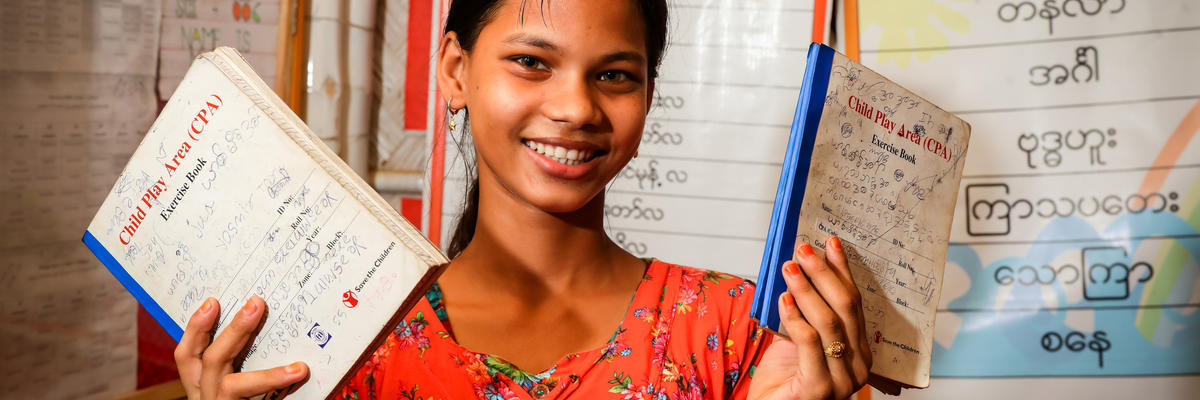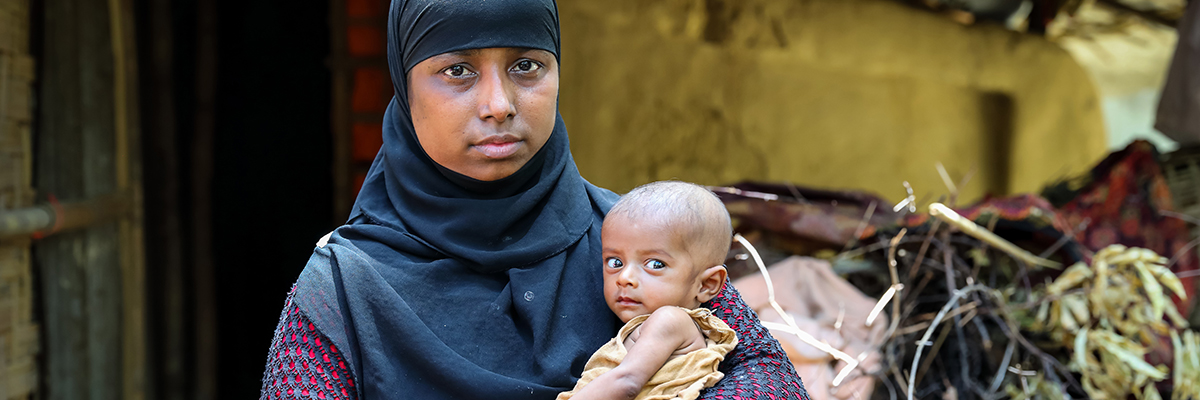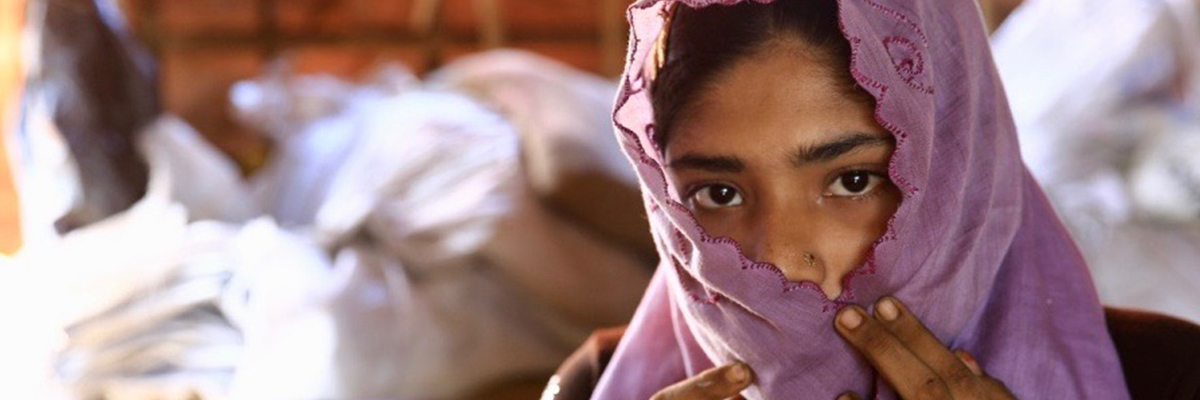One of our biggest concerns is the safety and wellbeing of children, thousands of who arrived in Cox’s Bazar alone. Where possible, we have reunited families. For children who have lost family, we’re providing care and protection. Our child friendly spaces offer children the space to play, receive emotional support and feel a sense of normalcy.
Scroll down to read the words of the children and families we are helping.
And join us for a live discussion covering analysis and first hand accounts of the situation.
In their own words: Ayesha*
Ayesha lives with her mother, father, two sisters and brother in the Rohingya refugee camps in Cox’s Bazar. Her family arrived in September 2017 after fleeing violence in Myanmar. Since arriving in the camps, Ayesha has been attending a Save the Children learning centre. She says she loves learning English and being able to make new friends.

“I would describe myself as brave but shy.
“When we arrived in Bangladesh, I didn’t have any friends. I went to the learning centre to meet friends, and to learn and play. I had to stop school in Myanmar because of the restless situation there. I wanted to learn.
“After going to the learning centre, I made some friends. We go to the centre together and learn together.
“Save the Children have given me a backpack with a pen, colouring pencils, notepaper, a water bottle and an umbrella. I use these when I go to the learning centre.
“My favourite subjects are English … because if I learn English, I will be able to teach English. When I play with my friends, read, write and draw at the learning centre, I feel happy.”
In their own words: Ara*
Kismot Ara, 25, lives in the Rohingya refugee camps in Cox’s Bazar with her husband, two young sons and seven-month-old Jamila. Kismot Ara arrived in the camps in October 2017, after fleeing violence in her village in Myanmar. She fled while heavily pregnant and gave birth to Jamila shortly after arriving in Bangladesh.

“When she was born, my daughter (Jamila*) was very skinny. After coming to the nutrition centre few times and feeding her the peanut paste, she started to get well. But, she got diarrhoea again recently and is now starting to lose weight and getting skinny like before.
“I often come to the Save the Children clinic to receive medicine for me and my children … the people from Save the Children also come to our home and talk to us about the importance of hygiene and nutrition, and how to stay clean and healthy.
“This clinic is very important, because people get sick often and here we can get medicine free of cost. This is a blessing for us.
“I don't want to go back to Myanmar and lose everything again. I want to give my children a safe and happy life. I also want my daughter to be healthy like other children.”
In their own words: Alia*
Alia, 16, fled her village in Northern Rakhine state, Myanmar, after it was attacked by the military. It took her and her family three days to reach the Bangladeshi border. Her family managed to find shelter in Kutupalong refugee camp.

“The military came to our village and started setting houses on fire. My family and I fled into the jungle immediately to hide. I could watch the military burning down the entire village and killing people. They shot, cut up, and stabbed many men and women. I could see everything and I was very scared that they would find us and kill my family and I too.
“It took us three days to reach the border, walking throughout the nights … I saw three people dying from exhaustion, dehydration, and not being able to eat.
“I miss going to school … Burmese and English were my favourite subjects. I liked English in particular as it is spoken all over the world.
“Here in the refugee camp … at night, we all sleep on a plastic sheet, which is very cold, especially when it rains. I have become ill because of that. Life here is hard and I have a lot of nightmares about what I witnessed the day we fled our village. I really want to return to my home in Myanmar.”